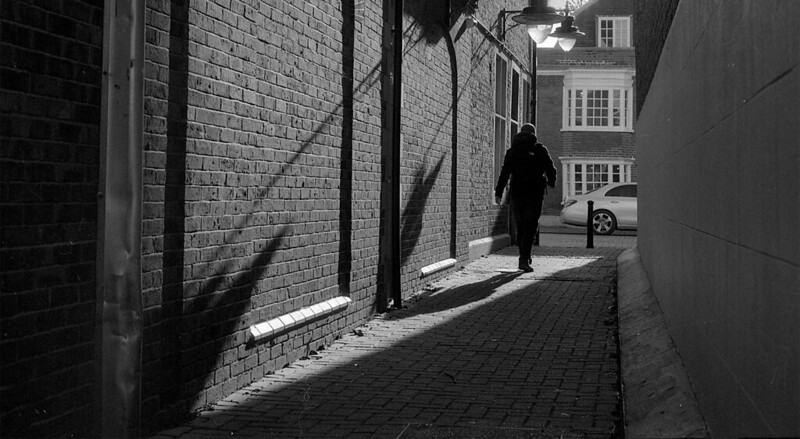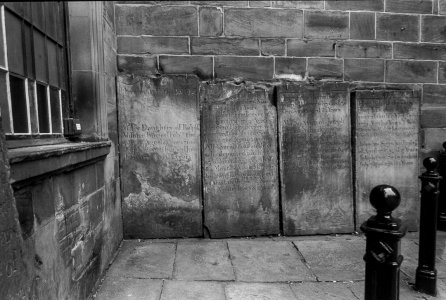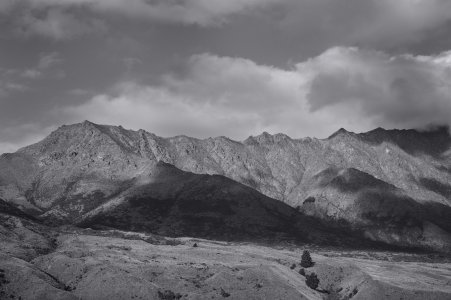Ko.Fe.
Lenses 35/21 Gears 46/20
To be honest, it is next to irrelevant which one. Believing what some developer will magically made your photos better is blind religion. 
If I want it grainy I use Rodinal, if I want it normal HC110.
If I want it grainy I use Rodinal, if I want it normal HC110.
AAlfano
Well-known
Yes but what would we do without blind religious arguments over what developer is best? Don't go ruining all the fun with practical advice!To be honest, it is next to irrelevant which one. Believing what some developer will magically made your photos better is blind religion.
If I want it grainy I use Rodinal, if I want it normal HC110.
skahde
V for Victory!
People are easily spending money for film and developers to find the the "right" combination but would hardly ever spend the same money on a used densitometer and a book which would enable them to make about any combination work as desired.
Bingley
Mentor
Thank you, Huub! Much appreciated!Absolutely wonderful shots! Each and every one of them!!
Ricoh
Well-known
Grainy as buggery, for preference. I’m thinking of using paper developer.To be honest, it is next to irrelevant which one. Believing what some developer will magically made your photos better is blind religion.
If I want it grainy I use Rodinal, if I want it normal HC110.
Ko.Fe.
Lenses 35/21 Gears 46/20
Dektol is common trick for laziness. Or just a TMAX 3200Grainy as buggery, for preference. I’m thinking of using paper developer.
But real grain comes with lith developer on darkroom print.
 Untitled by Kostya Fedot, on Flickr
Untitled by Kostya Fedot, on Flickrtelenous
Well-known
It's not about that.To be honest, it is next to irrelevant which one. Believing what some developer will magically made your photos better is blind religion.
If I want it grainy I use Rodinal, if I want it normal HC110.
Finding a film+Dev combo is an exhilarating process, esp. when you first start with film. It takes you out to shoot and the more you shoot the more you bring good things back home.
Seeing what others use and what they've ended up with, tells a little of their story. Maybe it inspires even a bit.
Your Lith photo does that too. That's what it's about, eh?
Freakscene
Obscure member
Dektol is common trick for laziness. Or just a TMAX 3200
But real grain comes with lith developer on darkroom print.
Untitled by Kostya Fedot, on Flickr
The trick is making grain while retaining tonality. This one, Kostya, is just gorgeous.
Back in the day I shot TMZ at 1000 and slightly over-developed it in Rodinal 1+25. Lith printed on Sterling paper, and with the highlights slightly bleached, it looked amazing. A lot of people liked it toned in polysulfide and then gold to give the mid tones a slightly pink blush. I learned the TMZ in Rodinal trick from a course where the Australian photographer Peter Eastway provided a presentation and folio critique. People *loved* it. I stopped showing it as a style option to clients after 6 months or so because everyone wanted it and it got boring, and all I was ever buying was bricks of TMZ and gallons of Rodinal. The approach was also very darkroom time intensive.
Marty
elmarman
Bail out the Brits too !
Been Experimenting with 'Stainers' lately -- I mixed up 510-Pyro and Pyrocat HD from the chemicals -- I had to order some Pyrocatchecol and the TEA and Propylenene Glycol . I got good results ---
The New KENTMERE 120 in a ROLLEIFLEX T with Pyrocat HD
 Pyrocat HD 01 by Peter Elgar, on Flickr
Pyrocat HD 01 by Peter Elgar, on Flickr
 Pyrocat HD 02 by Peter Elgar, on Flickr
Pyrocat HD 02 by Peter Elgar, on Flickr
Old FP4 bulk in LEICA IIIc 50mm f2 Summitar. 510-Pyro
 LEICA IIIc after CLA Test by Peter Elgar, on Flickr
LEICA IIIc after CLA Test by Peter Elgar, on Flickr
The New KENTMERE 120 in a ROLLEIFLEX T with Pyrocat HD
 Pyrocat HD 01 by Peter Elgar, on Flickr
Pyrocat HD 01 by Peter Elgar, on Flickr Pyrocat HD 02 by Peter Elgar, on Flickr
Pyrocat HD 02 by Peter Elgar, on FlickrOld FP4 bulk in LEICA IIIc 50mm f2 Summitar. 510-Pyro
 LEICA IIIc after CLA Test by Peter Elgar, on Flickr
LEICA IIIc after CLA Test by Peter Elgar, on FlickrRicoh
Well-known
Superb, love it. 👍Dektol is common trick for laziness. Or just a TMAX 3200
But real grain comes with lith developer on darkroom print.
Untitled by Kostya Fedot, on Flickr
Bingley
Mentor
On the topic of grain, in post 42 above I showed some examples, taken in Lisbon ten years ago, using Tri-X shot at iso 250 and developed in HC 110 dil. h for 11:30 mins. I liked the smoothness and tonality of those photos, w/ very little of the grain I associate w/ Tri-X developed at box speed (or higher). I decided to try this approach again several weeks ago, this time using Legacy Pro 110 dil. h instead of HC 110. Here are two of the results. I may use Tri-X in this way more often…
 Winter by Steve Macfarlane, on Flickr
Winter by Steve Macfarlane, on Flickr
 Winter II by Steve Macfarlane, on Flickr
Winter II by Steve Macfarlane, on Flickr
 Winter by Steve Macfarlane, on Flickr
Winter by Steve Macfarlane, on Flickr Winter II by Steve Macfarlane, on Flickr
Winter II by Steve Macfarlane, on FlickrBingley
Mentor
Compare the results above w/ the photo below, using Cinestill XX film and D96 Monobath developer. The photo is definitely grainier, yet I like the tones. If you like Cinestill XX (or Eastman XX), but want a less grainier look, try developing in Ilfotec DDX.
 Viewpoint by Steve Macfarlane, on Flickr
Viewpoint by Steve Macfarlane, on Flickr
 Viewpoint by Steve Macfarlane, on Flickr
Viewpoint by Steve Macfarlane, on Flickragentlossing
Well-known
I developed a roll of (probably expired) Tri-X in Rodinal yesterday and the results reminded me that I need to get a different developer for ISO 400 film. I like the way HP5 looks pushed in Rodinal, but not particularly at box speed, and I didn't care for the way Tri-X looked either. I'm willing to give LegacyPro L110 a try, it's inexpensive and shippable. Does the bottle hold up well over time once opened?
Freakscene
Obscure member
I'm willing to give LegacyPro L110 a try, it's inexpensive and shippable. Does the bottle hold up well over time once opened?
Legacy Pro L110 has water in it, and theoretically won’t last as long as the old glycol only Kodak HC-110. But the new Kodak HC-110 is similar (identical?) to Legacy Pro. I am curious about L110, but have 5L of the old HC-110, so I am not so curious as to set up an experiment to assess its stability. Maybe try some and let us know. You can buy some of these: Ilford FP4 Plus 125 ISO 35mm x 100 ft. Process Control Strips | Freestyle Photo & Imaging and use them with a densitometer (or a flatbed scanner works just fine) to very finely assess the performance of the developer.
Marty
markjwyatt
Well-known
Rollei sell R09. I have a bottle. It is over a year old and looks kind of dirty. I heard that unlike ADOX Rodinal, they use a a less pure form of a key chemical. While it was new I used it and it worked fine.
Accorind to Adox it is paraminophenol (link) . Interested?Possible but I doubt it. If someone could say which chemical, and what contaminant, I might start to be interested, but the original Agfa product can oxidise too....
Marty
Freakscene
Obscure member
What Mirko says (and he should know, he owns and runs Adox) in the attached link, is that the used Adox Rodinal developer goes black when discarded after use, but the R09 did not. This is because of differences in the purity and type of p-aminophenol. This doesn’t say anything about shelf life or changes in storage. Developing film oxidises the developer, because its job is to reduce light sensitive silver salts to metallic silver. The reactions with oxygen in storage differ.Accorind to Adox it is paraminophenol (link) . Interested?
Marty
pintpot
pintpot
Bingley
Mentor
I developed a roll of (probably expired) Tri-X in Rodinal yesterday and the results reminded me that I need to get a different developer for ISO 400 film. I like the way HP5 looks pushed in Rodinal, but not particularly at box speed, and I didn't care for the way Tri-X looked either. I'm willing to give LegacyPro L110 a try, it's inexpensive and shippable. Does the bottle hold up well over time once opened?
Yes, Legacy Pro 110 seems to hold up pretty well once the bottle is opened. Which should make sense since it’s very close (if not chemically identical) to HC 110, a very long-lived developer. Legacy Pro 110 is also sold in smaller bottles than HC 110. I’m still working through my first bottle of Legacy Pro, and it shows no signs of losing efficacy as a developer.
agentlossing
Well-known
I committed to a bottle of TMax film dev, hoping to get some decent results from that. From what I've seen, the 1:7 dilution seems good for my needs.
Freakscene
Obscure member
Share:
-
This site uses cookies to help personalise content, tailor your experience and to keep you logged in if you register.
By continuing to use this site, you are consenting to our use of cookies.



